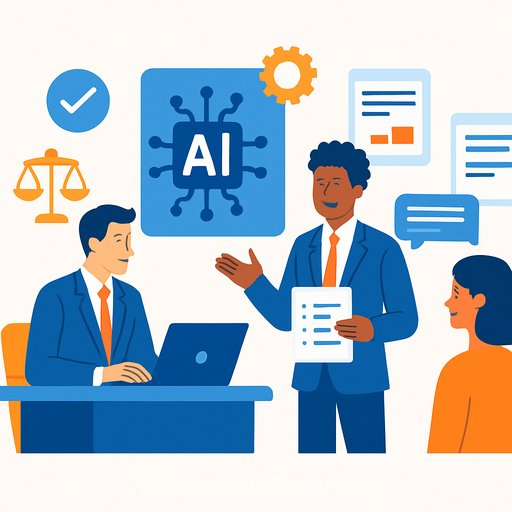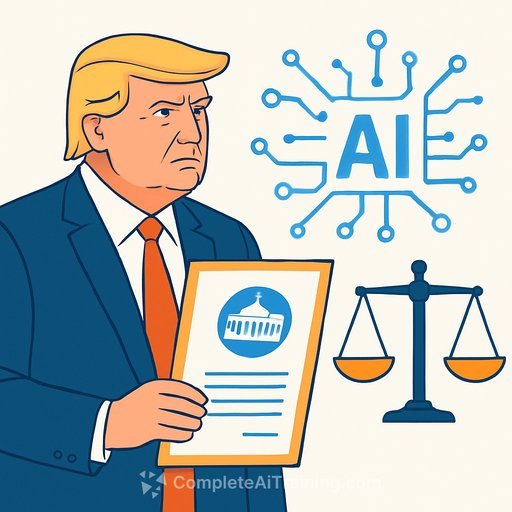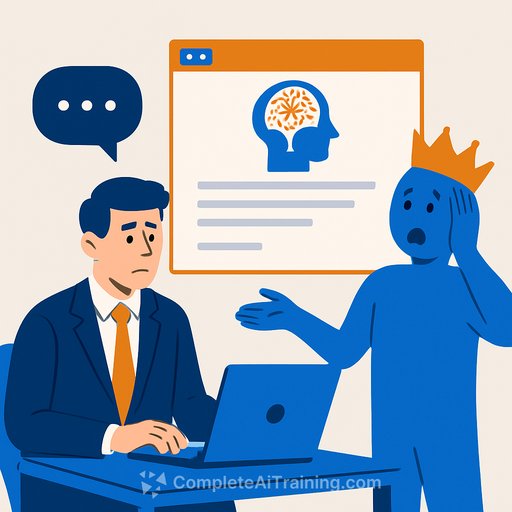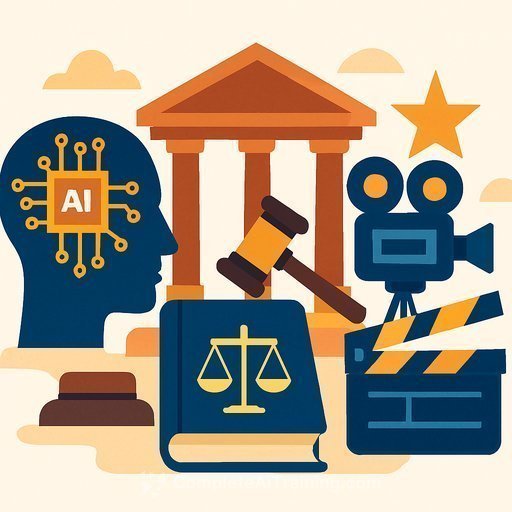AI in Legal Practice: Practical Lessons from Lucas & Wyllys
AI is moving from concept to daily utility in law. It cuts admin, improves accuracy, and clears space for higher-value work. For firms under pressure from growing caseloads and rising client expectations, that matters.
Lucas & Wyllys, a long-established practice on England's east coast, offers a clear example. After moving to cloud-based case management, they went further with AI tools from their practice management provider, LEAP, focusing on content generation, research, and time recording.
From cloud systems to AI-enabled execution
The goal wasn't novelty. It was relief from the workload that slows teams down. AI now supports their lawyers across everyday tasks without replacing judgement.
- Research assistance and quick matter analysis
- First-draft generation for documents and reports
- Time recording and task capture
- Client-ready summaries and explanations
Automation that turns hours into minutes
Managing partner and conveyancing solicitor Amy Church is direct about the impact: "What used to take significant time to analyse matters, carry out legal research, draft and refine documentation can now be completed in minutes."
On drafting, the team starts with AI-generated first drafts, then refines. For property reports, AI pulls key details and produces clear explanations. Lawyers spend their time on nuance and judgement, not rephrasing source material.
Communication and accuracy that build trust
Accuracy has improved. AI prompts flag issues a lawyer might otherwise miss, reducing the risk of oversight. The systems don't replace professional judgement; they add a second set of eyes.
Client communication is clearer too. "Clients understand legal matters more easily because our explanations are structured," says Amy. When information arrives in a clean format, decisions come faster.
A team ready to adopt what works
The firm's response has been positive. Lawyers see AI as a way to work smarter and focus on meaningful tasks. Amy is blunt: "If you don't adopt AI, you risk being left behind."
Her advice: experiment. Use it a few times and it becomes second nature.
What this means for your firm
AI in law is already here. The lesson from Lucas & Wyllys: you can save time, improve communication, and support accuracy without diluting expertise. As Gareth Walker, CEO of LEAP, notes, "As the technology develops, firms will need to balance innovation with tradition. Increasingly, providers such as LEAP are helping bridge that gap by making AI tools accessible to practices of all sizes."
The firms that lean in will handle modern pressures better. Those that resist will find it harder to meet client expectations.
Start small: a practical adoption playbook
- Pick low-risk use cases: research memos, checklists, first drafts, matter summaries.
- Keep a human in the loop: require review and sign-off on all AI outputs.
- Integrate with your PMS: capture drafts and time automatically where possible.
- Set rules: confidentiality, data handling, prompt hygiene, and approval paths.
- Measure gains: track hours saved, turnaround times, and client feedback.
- Upskill the team: teach effective prompting and review techniques.
For data and privacy guardrails, see the UK ICO's guidance on AI and data protection: ICO: Artificial Intelligence.
If you want structured upskilling for prompt craft and workflow design, explore short courses by job role: Complete AI Training.
Bottom line
AI won't replace legal judgement. It will remove busywork and surface overlooked issues. Start with a pilot, document the wins, and roll it out where it proves its value.
Your membership also unlocks:






